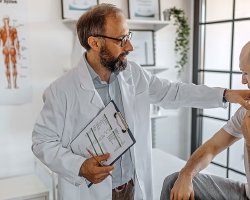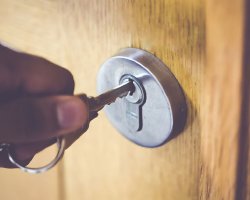How Can We Make 2019 a Year of Good Deeds in the Fight against Opioid Addiction?

The New Year is well underway, giving us opportunities for thoughtful introspection on how we can make 2019 not just a good year, but a great one.
In light of that, I can’t help but wonder what will happen on the addiction scene this year, where things will go with our nation’s considerable drug problem. We might be in the worst drug crisis our country has ever had. It’s certainly the most terrible one of our lifetimes. What is going to happen? Will it get worse? Or will conditions improve?
The more I worried about the future, the more I realized how silly that was of me. Rather than spending the first few weeks of the new year worrying about what 2019 will bring and where our addiction crisis will be at year’s end, why not spend these weeks brainstorming how we can make a difference? Why not put together ideas on how we can make effective change in curbing the drug problem, from our very own households?
Let’s Make This Our Problem to Solve
I think it’s safe to say that we can no longer expect the government—federal or state—to fix the condition of the nation when it comes to addiction. It just isn’t going to happen. Our government has been working on the addiction crisis since it began in the late 1990s, and the problem has only gotten worse since then.
So we have to take this problem into our own hands. Even if we feel like there’s nothing we can do about it, we can’t let our self-doubt get in the way. Overcoming a national substance abuse crisis seems overwhelming, but it won’t be if we all work together on it. To that end, I’ve included four strategies below that any individual, family, household, or community can incorporate into their day-to-day lives that would make a difference in the status quo.
Our Efforts in Our Own Homes Go a Long Way

When we examine the drug problem on a national scale, it seems overwhelming. Maybe it is. It’s like looking at a map of the country versus a map of your own town. Big difference. But why are we trying to tackle the mountain without climbing the foothills first? Let’s do this one step at a time. Let’s focus on our own homes first.
What are you currently doing in your home to ensure that no one in your household experiments with drugs and alcohol?
If every household took responsibility for the members of that household—adults, children, seniors, parents, siblings, spouses, and so on, we’d drastically curb the drug problem.
Having conversations within the home, discussing the dangers of drug use, studying cautionary material on the risks of alcohol consumption, engaging in discourse with the family over why drug and alcohol misuse is harmful, and so on, all serve to create a sober and drug-free household. (For more information on how to talk to family members [namely kids] about drugs, check out the National Institute on Drug Abuse).
Let’s Also Insist That Schools Educate Kids about Drugs
Our kids are the future of our country. One day, they’ll be running one of the greatest nations in the world, and we’ll be looking to them for leadership and support. What happens if our kids grow up thinking it’s okay to use drugs?
Let’s pause for a minute and look at what happens when drug use becomes “okay.”
This is what happened with pharmaceutical drugs, and it’s why we have the opioid addiction epidemic that we are in right now.
In the late 1990s and the early 2000s, the pharmaceutical and medical industries made it “okay” for millions of patients to consume highly addictive, mind-altering opioid pain-reliever drugs. The result? An opiate addiction epidemic.
Even to this day, pharmaceutical drug use still appears to young people as “okay” or at least “less risky” than street drug use because pharmaceutical drugs are supposed to be “safe and helpful.”
A crisis like this is what happens when a group gets the idea that drug use is okay. To curb the spread of this idea, we need to get drug education into our local schools. It’s something we can all work on. This is something we can insist on at PTA meetings, and something we can work towards on school boards, etc.
At this time, drug education is not something that schools have in their curriculum. Sex education? Most likely. Home economics? Maybe. Shop class? Likely. But shouldn’t kids also be learning about the risks of what might be the single greatest health threat that faces them as they come out of school and grow into adulthood?
The Drug Policy Alliance is a group which actively advocates the use of drug education in schools. You can check out their website for more info on how we could implement drug education in schools.
We Can Work on Community Programs to Raise Awareness for Drug Addiction Issues

Working in our homes and schools to address the drug problem is a great start, but we need to take it a step further. If we want to live in neighborhoods, communities, towns, and cities that are free from substance abuse, we’ll have to work for them.
Where to start? How about with marches, rallies, fundraisers, bake sales, petitions, door-to-door discussions, public service announcements, flyers, billboard advertising, and promotion in local businesses and at community events?
A big part of reducing a drug problem lies in raising awareness of the drug problem. Addiction does not go away if the community as a whole does not know about it. This is an illness that festers in the dark shadows. Out of sight, out of mind. When we raise awareness of drug abuse, we get the community involved in addressing it.
A group that sets an example in this regard is the Mothers Against Drunk Driving (MADD) group. This group started around a family’s kitchen table in 1980. The program began as a community effort, and almost forty years later it is still a community effort in hundreds of communities across the nation.
We Can Focus on Treating Addicts, Not Incarcerating Them
Last but not least, we have to focus on helping addicts get better, rather than incarcerating them. Our country is starting to move in this direction, but it’s not happening fast enough. In a lot of ways, we still beat the drum for the 1970’s Nixon era and 1980’s Reagan era “War on Drugs” dogma.
That program never worked, and it is not working today. We have to treat addicts with the help of inpatient addiction rehabilitation centers, not incarcerate them.
On the community level, we need to help local addicts in our areas get into and through rehab centers, not jail cells. Rehabs offer a way out of the darkness that is an addiction. A jail cell is just a stop-gap, momentary lull in an addict’s life before he or she gets out of jail and likely goes right back to drug and alcohol misuse.
According to the National Council on Alcoholism and Drug Dependence, after a drug user leaves jail, he or she has about a 95% chance of returning to drug use or alcohol misuse. We have to help these people with addiction treatment—not incarceration.
We have a long road ahead of us, but it’s a road that we can walk. We don’t have to wait for a government body or institution to walk it for us. We can tackle the addiction problem.
Sources:
- https://www.drugabuse.gov/publications/marijuana-facts-parents-need-to-know/talking-to-your-kids-communicating-risks
- http://www.drugpolicy.org/blog/drug-education-high-school-needs-be-more-comprehensive
- https://www.madd.org/
- http://knowledgecenter.csg.org/kc/content/drug-abuse-states-incarceration#_edn9


 ®
®